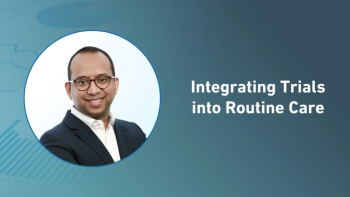
Analysis Shows Diabetes Mellitus May Increase Risk of Developing Tuberculosis
Investigators conclude that policies seeking to lower rates of diabetes may also contribute to the goal of ending tuberculosis.
An analysis of retrospective and prospective cohort studies finds that diabetes likely elevates the risk of developing tuberculosis (TB), both in the short-term of fewer than 10 years and potentially in the long term of greater than 10 years.1 The authors of the analysis, published by Cochrane Database of Systematic Reviews, noted that policies seeking to lower the burden of diabetes are necessary to help with the goal of ending TB.
“Large population‐based cohorts, including those derived from high‐quality national registries of exposures (diabetes) and outcomes (TB disease), are needed to provide estimates with a high certainty of evidence of this risk across different settings and populations, including low‐ and middle‐income countries from different WHO regions,” the study authors wrote. “Moreover, studies including children and adolescents and currently recommended methods for diagnosing TB would provide more up‐to‐date information relevant to practice and policy.”1
CDC data shows approximately 8,300 cases of TB in 2022, up from 7,874 cases in 2021, which are the most recent years for which data were available. TB cases in the United States are also returning to pre-COVID-19 pandemic levels, after a significant drop in 2020, likely as a result of factors associated with the pandemic, such as missed or delayed diagnoses.2
“Before the COVID-19 pandemic, TB case counts and incidence rates had been steadily decreasing in the United States since 1992,” the CDC writes. “During 2020, TB case counts and incidence rates declined substantially, likely because of factors associated with the COVID-19 pandemic. In 2021, TB case counts and incidence partially rebounded, but remained lower compared with 2019. In 2022, reported TB cases and incidence rates increased for the second year in a row, but remained lower compared with 2019 prior to the COVID-19 pandemic. As the effects of the COVID-19 pandemic shift over time, we must rededicate our efforts and resources to achieve elimination of TB in the United States.”2
The authors of the current study sought to evaluate the risk of developing TB disease for people with diabetes mellitus (DM) compared to those without diabetes in the general population of adults, adolescents, and children.They analyzed 48 cohort studies that included more than 61 million participants from six WHO regions; however, there were eight population‐based studies from South Korea and 19 from China that had overlapping study periods, but only one from Africa (Ethiopia). All of the studies included adults, whereas nine also included children and adolescents. Most studies diagnosed DM based on clinical records, including fasting blood glucose levels or glucose‐lowering treatments.
“Diabetes may increase the risk of both TB infection and TB disease. While the distinction between these two outcomes is crucial, it can be challenging to delineate in empirical studies, as the progression from TB infection to TB disease is not always tracked in individuals at risk due to the lack of systematic identification of TB infection,” the study authors wrote. “WHO issued a conditional recommendation to screen for TB in people seeking care or already in care and having clinical risk factors, including diabetes, in high‐prevalence areas. However, individuals who are at higher risk of developing TB disease may be targeted for TB screening.”1
The study found that patients with diabetes have a 1.5 to 2.4 times greater risk of developing TB compared to patients without diabetes.However, the certainty of the evidence is low because of a moderate risk of bias across the studies and inconsistency, according to the investigators.
“Diabetes mellitus probably increases the risk of (TB) within the first decade of follow‐up and may also increase the risk in the long term (10 or more years),” the study authors concluded. “Policies targeted at the reduction of diabetes could contribute to the aim of ending TB.”1
References
1. Franco JVA, Bongaerts B, Metzendorf MI, Risso A, Guo Y, Peña Silva L, Boeckmann M, Schlesinger S, Damen JAAG, Richter B, Baddeley A, Bastard M, Carlqvist A, Garcia-Casal MN, Hemmingsen B, Mavhunga F, Manne-Goehler J, Viney K, Lethaby A. Diabetes as a risk factor for tuberculosis disease. Cochrane Database of Systematic Reviews 2024, Issue 8. Art. No.: CD016013. DOI: 10.1002/14651858.CD016013.pub2. Accessed August 27, 2024.
2. CDC. Tuberculosis Data and Statistics. Webpage. Accessed August 27, 2024.
Newsletter
Stay current in clinical research with Applied Clinical Trials, providing expert insights, regulatory updates, and practical strategies for successful clinical trial design and execution.





.png)



.png)



.png)
.png)
